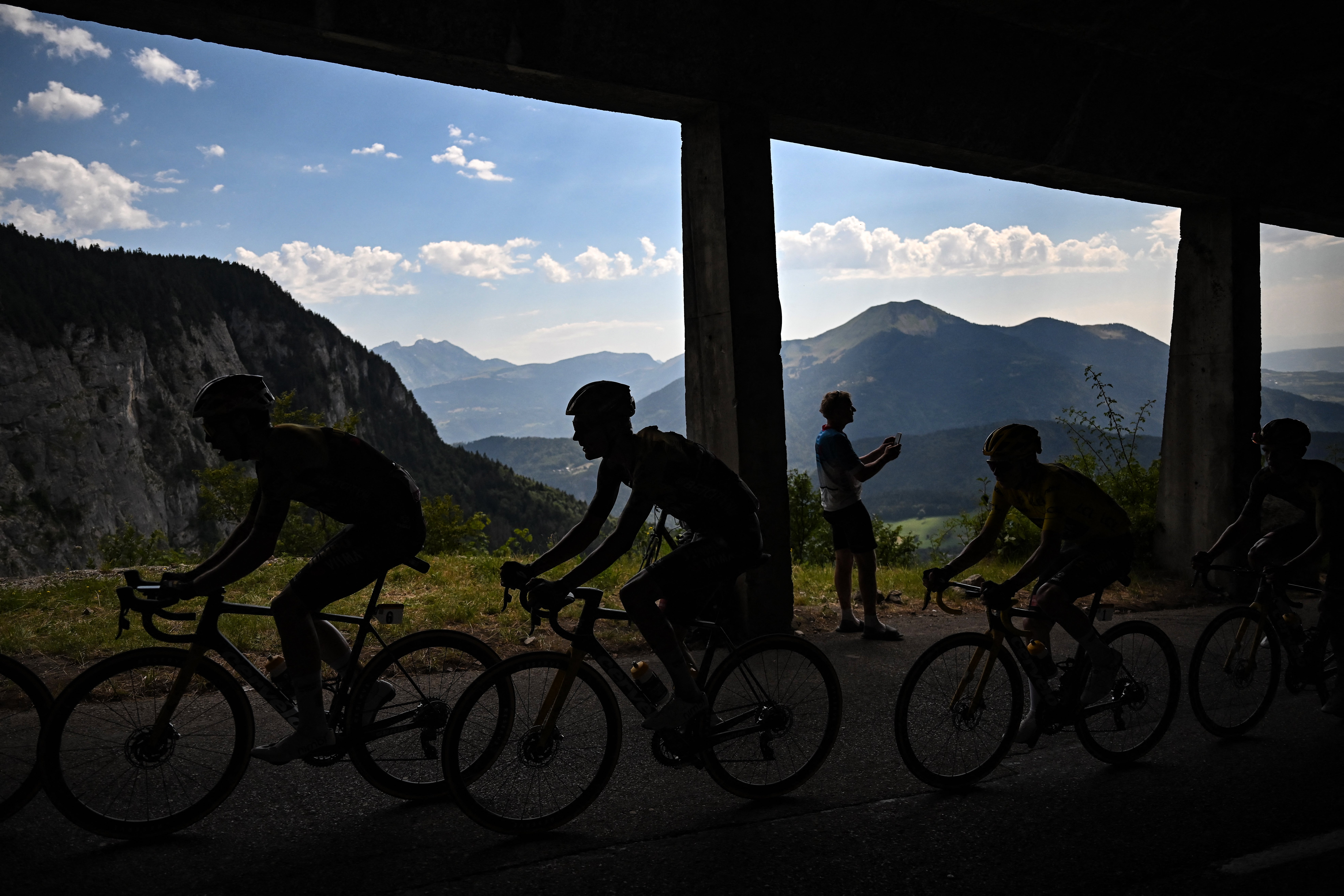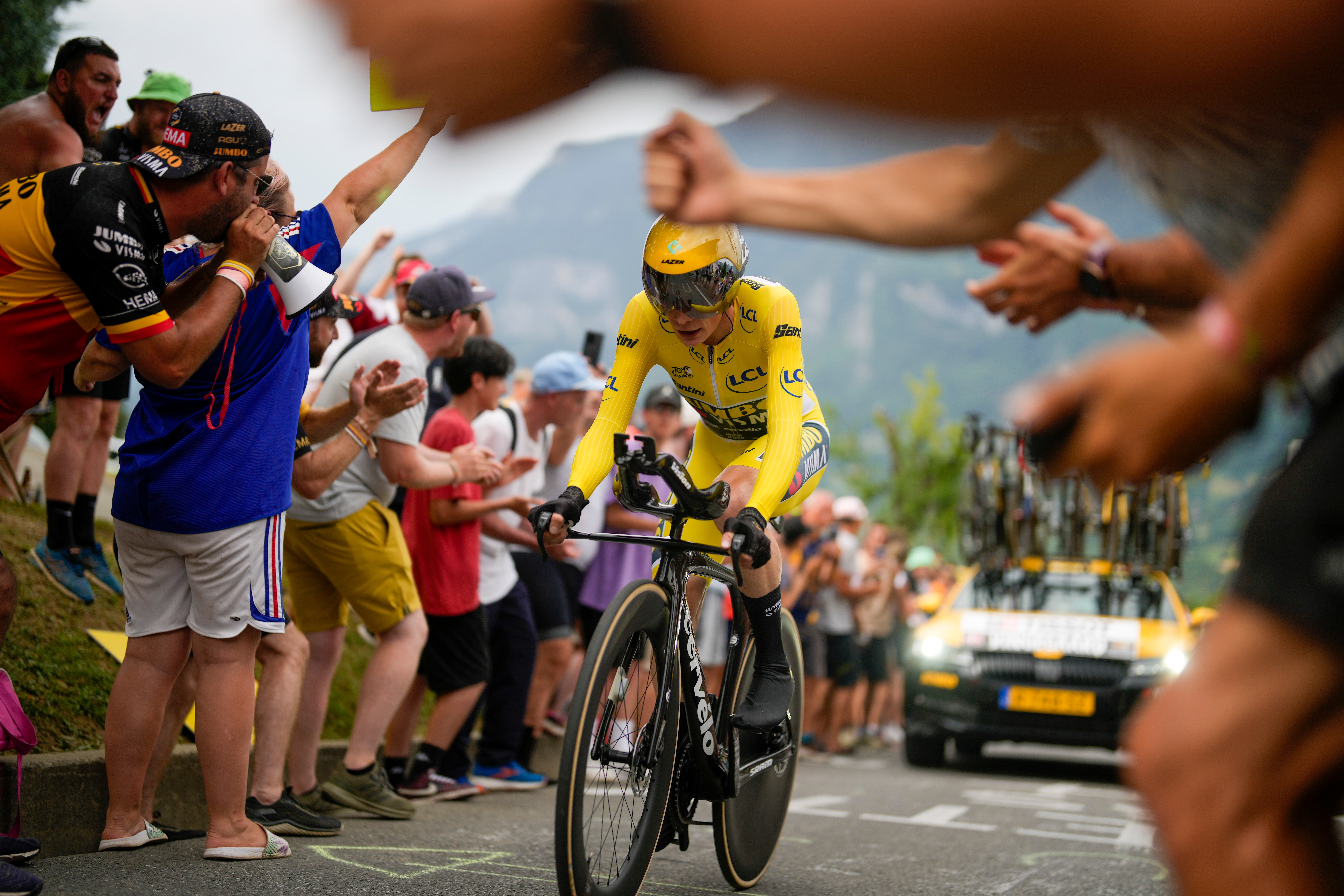Night riders: The Tour de France team that never sleeps
Collapsing and rebuilding the Tour de France each day is a Herculean operation involving 72 staff and 46 trucks working through the night in all conditions, writes Lawrence Ostlere. And winning a place on the team is almost as hard as the main event


There are 22 teams at this year’s Tour de France, but there is another that rides by night. “We work in the shadows,” says Luis Gomez. “But somehow we feel a strong part of the race.”
Gomez’s team includes 72 staff in 46 trucks who build the world’s biggest cycling race, pack it all up and rebuild each day, from the ‘depart village’ to the finish line and everything in between. They cover a total 150,000km across three weeks, from tiny villages deep in the Massif to sweeping coastlines; from high Alpine roads to the heart of Paris.
They work in the dark, in whatever conditions the volatile French summer throws up, often on small rural roads and winding mountain tracks. Planned routes quickly change in the Tour de France for any number of reasons – hailstorms, mudslides, the customary farmers’ protest – and the team have to react to whatever the Tour throws at them.
And they have another role, too: drivers act as a crucial layer of security for French police, an extra set of eyes and ears arriving hours before the crowds.
We live all together for one month. We need solidarity and a very good spirit
“Some years the focus is on the risk of terrorist attack, so it’s very important our drivers are constantly looking around,” says Gomez, the European president of the company in charge of making the Tour run smoothly, XPO. “They have direct lines with the police, special police we don’t even see. Where we can identify something or we see something strange, it’s an important collaboration.”
The team is split in three: a group who build the start, a group who travel the race route setting up intermediate sprint points and King of the Mountains markers, and a group who create the finish – from the hoardings along the home stretch to the podium, and even the line itself, complete with photo equipment in case of a close call. The finishers are at the final town before dawn to start work at 6am, and they have six hours before a strict deadline of midday when the world’s TV cameras begin to roll.
Competition among drivers for Tour de France selection is as fierce as any professional cycling team, with applications far outstripping places on the XPO team. Only the best are selected to handle the highest mountain roads, in specially adapted trucks.
“I need strong experience each year,” says team manager Jean-Baptiste Hocquaux, who treats his role much like a sports coach. “I also need to inject new drivers, so I need to find the best mix because we live all together for one month. We need solidarity and a very good spirit.”
The team’s job is to be virtually invisible, but that’s not always easy. In 2021 a truck broke down travelling through a tiny village in central France, miles from anywhere, in the dark. The fact that it was a Friday night made the challenge of finding a replacement vehicle even harder, but they managed to scramble support and drove through the night to set up without delaying the race.

Staying on track is not the only challenge. Sports mega-events are notoriously damaging for the environment and the Tour de France is under increasing pressure to clean up its act. The trucks have come under scrutiny and this year XPO are taking strides of change. After testing a truck with hydrotreated vegetable oil (HVO) fuel at last year’s Tour, the entire fleet is now fuelled by HVO, which reduces carbon emissions by up to 90%. The Tour is not a lucrative contract for the company but it is an important showcase and a testing ground, and there are plans to undertake more HVO-fuelled journeys across the business.
“From that perspective, it is the greenest Tour in history,” beams Gomez. They will test two electric vehicles at the finale in Paris this year too. Electricity is unlikely to be the answer for the Tour’s logistics any time soon, given the distances involved, but it presents another opportunity for progress in urban spaces.
Back at the start of this Tour de France, the depart village bustled under the San Mames Stadium in Bilbao as thousands came to see the race begin. It was rapidly dismantled, and just like the peloton itself, in a flash it was gone. Making the behemoth that is the Tour de France run like clockwork is a challenge but a privilege too. And when they get a moment’s rest, sometimes the team even catch a glimpse of the race.
“The drivers always send me pictures,” says Gomez. “They feel very proud.”






Join our commenting forum
Join thought-provoking conversations, follow other Independent readers and see their replies
Comments